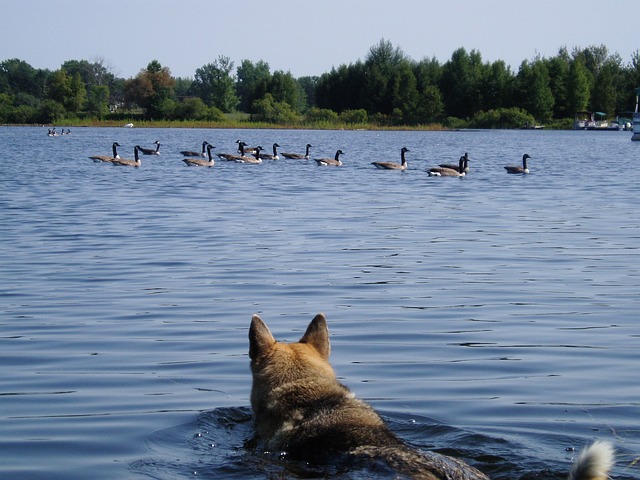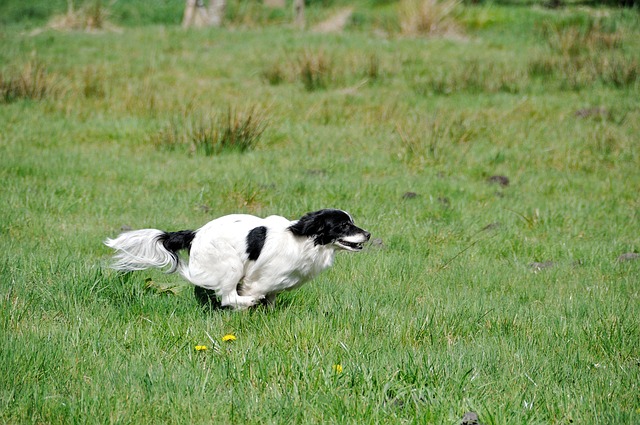When your dog has a high prey drive, no squirrel, cat, or plastic bag floating in the wind is safe. They’ll chase anything that moves, and that poses obvious problems when it comes to both their safety and their prey’s. Descended from wolves, every dog at its base level is considered a predator. For some breeds, the instinct to chase and kill has been used as an asset. Border Collies, Airedale Terriers, Rhodesian Ridgebacks—they’ve all been bred for a specific job based on their prey drive. Border Collies wouldn’t be any help with herding if they didn’t have a natural instinct to chase and move animals. Originally bred to hunt otters, Airedale Terriers would have been useless in the hunt if generations worth of selective breeding hadn’t amplified their instinctual desire to hunt down small prey.

Having the urge to chase is completely natural for every dog, but the problem comes when you take that product of selective breeding out of the hunt and off the farm and place it in a suburban setting. Suddenly chasing everything that moves is no longer a good thing but something most dog owners find frustrating to deal with. There’s no “cure” to eliminate a dog’s prey drive, but their behavior shouldn’t be seen as a negative quality. Every time a dog chases a trespassing squirrel off their property, they’re simply satisfying the impulse humans have taught them to have. Instead of disciplining the dog to put an end to the chase, owners who have dogs with high prey drives learn to manage the behavior.
Here are a few tips for handling a dog with a high prey drive.
#1 – Keep the Leash Clipped
When your dog is off leash, there’s no way to control the situation. If you know your pup can’t resist the thrill of the chase, off-leash walking is never a good idea. Your dog could excel at heeling and recall in every other situation, but it only takes one feathery or furry distraction to overthrow their restraint. Only let your dog loose in open areas if you’re 100% confident in their recall.
Dogs with high prey drives should also avoid dog parks where both small and large dogs are intermixed. A Teacup Poodle sprinting across the field after a ball could be enough to trigger your big dog’s desire to chase. Your Dog’s Friend, a positive dog training organization in Rockville, MD, warns clients of what they call “predatory drift.”
“Some dogs will revert to a state called predatory drift, where their instincts take over. They may stalk, chase, and shake a smaller dog, just as they would if chasing and killing prey. This isn’t something you want to take a chance with.”

#2 – Focus on Redirection
Knowing how to successfully redirect your dog’s attention is a valuable skill. It works by drawing a dog’s focus away from possible prey and directing it toward a more acceptable outlet. The key to successful redirection is getting the dog’s attention before, or soon after, they notice something worth chasing. Once they’re fully fixated on their prey, the temptation to chase will be too strong to break.
For example, imagine you’re out walking with your dog on leash. Make it a habit to keep your head on a swivel and always be aware of your surroundings. Constantly look ahead and to the side for anything in your dog’s site-line they might want to chase. If you see a stray cat peering out from under a bush, redirect your dog’s attention by turning around, crossing the street, or going in another direction. If you have no choice but to pass the cat, use a particularly tasty treat or a favorite squeaky toy to attract the dog’s attention. Wait until their focus is entirely on you before proceeding to pass the cat. Once you’re safely in the clear, reward the dog with whatever’s in your hand. You want to send the message that paying attention to you is much more rewarding than going on a chase.
#3 – Know the Signs
Once a dog springs after their prey, your chances of getting them back are slim. A dog with high prey drive often possesses tunnel vision — which in turn can quickly make everything else in the world disappear. A dog on the chase won’t look for cars before he crosses the street, and he could run miles before he realizes his owner is no longer behind him. You can avoid this situation by knowing when your dog is about to chase something before it actually happens.
Web MD-Pets goes into detail about how reading a dog’s body language is invaluable when it comes to predicting their actions:
“When your dog is relaxed and comfortable, he’ll hold his ears naturally. When he’s alert, he’ll raise them higher on his head and he’ll direct them toward whatever’s holding his interest. “
You’ll know your dog has locked on to their prey when they stop moving and become still. Their ears will be pricked forward and their eyes will be unblinking. This window of stillness might last a few minutes, or it could be only a few seconds. Some dogs stalk their prey by moving slowly and low to the ground, but others skip this step and burst immediately into action. If you notice any of these behaviors in your dog, grip the leash tighter and work on redirecting their attention.

#4 – Satisfy the Urge in a Controlled Setting
Many trainers recommend satisfying a dog’s prey drive through controlled activities. There are several games you can play with your dog that mimic the thrill of the chase without the consequences. A prey stick or flirt pole for dogs is a toy that looks almost like a dog fishing pole. There’s a soft toy tied to a string and attached to a pole. When you wave the pole, the lure looks like moving prey, and dogs can safely play while satisfying their desire to chase and bite. Playing fetch with a ball or Frisbee is also a prey-related game. Even blowing bubbles for the dog to chase engages the predator instinct.
While you’re playing the games, take the opportunity to teach your dog self control. Establish cues for when it’s time to start playing and when it’s time to stop. If you’re ever in a real-life situation when your dog is about to chase live prey, use the cues to hone their instincts.
#5 – Focus on Impulse Control Training
When your dog leaps after the neighbor’s cat, they’re giving into an impulse. They won’t stop to think or listen to a command unless you teach them how and practice the skill on a regular basis. You can help your dog learn to control their impulses with specific training lessons. Commands like “stay,” “leave it,” watch me,” and “place,” all practice impulse control. The dog learns to stop and think about what they’re doing before jumping into action.
Once your dog has mastered these tricks in a calm environment, test their skills when there are distractions around. The more they practice self control, the better equipped they’ll be to resist the temptation of the chase. The commands “come” and “drop it” are also valuable lessons for your dog to know.
 Toledo, United States.
Toledo, United States.